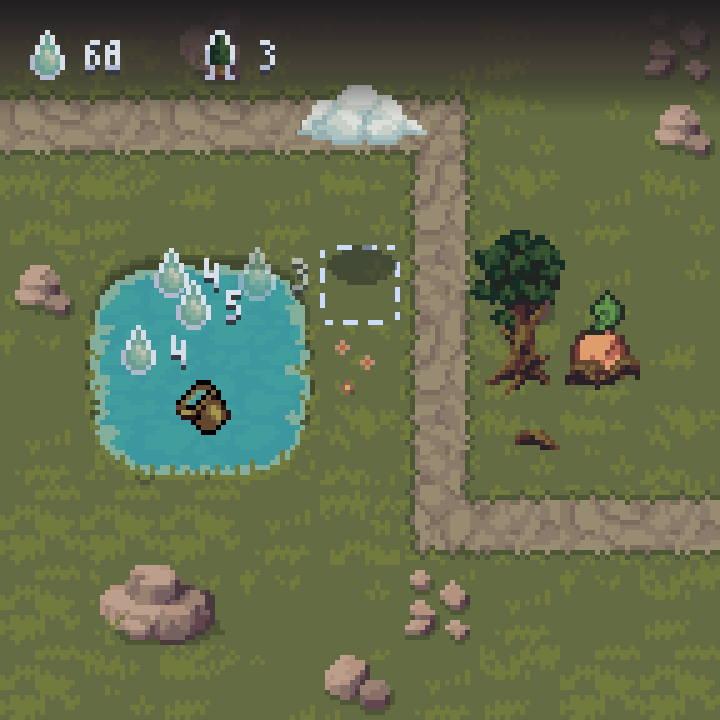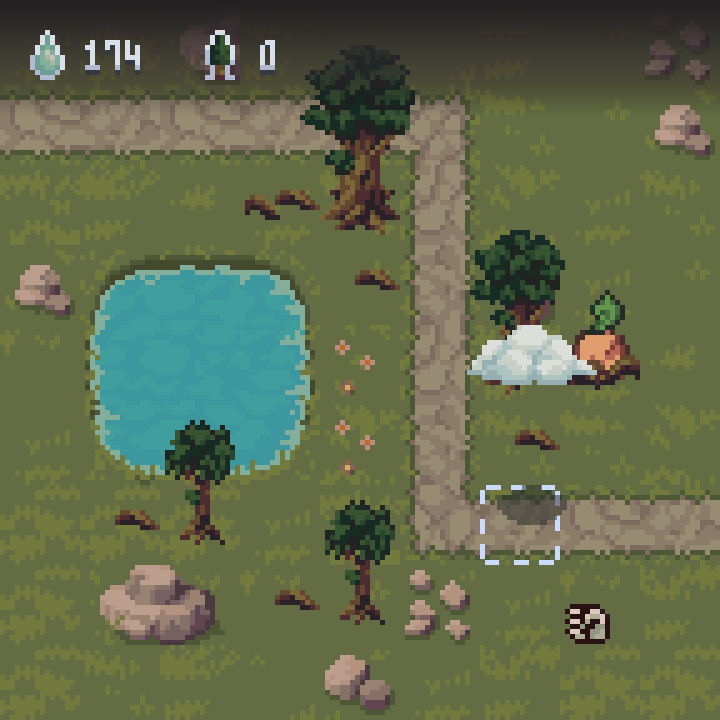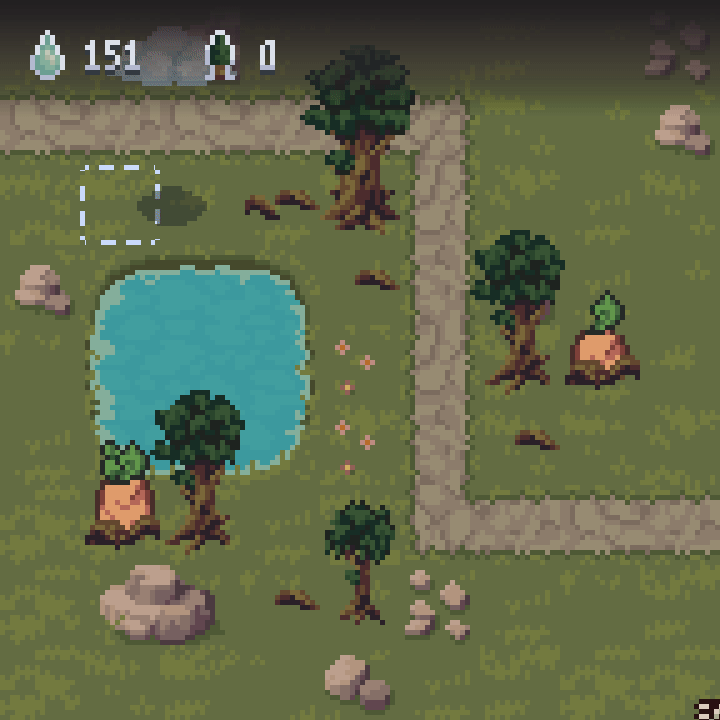The Making of Root & Bloom
This is how it happened...
Hello! I'm Beez, the game designer behind the idea of Root & Bloom. In this devlog, I will talk about the making of Root & Bloom by also giving hints about my general approach to designing a game. Let's begin!
Constraints
Taking constraints into consideration about the development of the game, most of the time is the first thing I do when I start to design a new game.
At the beginning of the development of Root & Bloom, I asked the questions below myself and tried my best to answer them after overseeing the team I worked with.
- How much time do we have?
- How much are the team members going to participate in development?
- How is the team composition?
- How skilled is the team?
- Have the team members created a game like "this" before?
Root & Bloom was developed during the Global Game Jam 2023, meaning that we had 48 hours to create a game. The team members were in search of something simple considering not everyone was going to participate in the jam fully. The team had me as the designer and programmer, a pixel artist, a composer, and a sound designer. Each member of the team was pretty skilled in their own area of expertise to kick off a game project. The last question was to be answered later.

Considering these answers, it would be best to create a little game that is polished rather than going for a complex game. I have always been bad at setting a proper scope for the games I design though.
Creating WHAT Would Make Me Happy?
This is a question I ask myself every time when I'm to design a game. In the end, I believe that motivation is the most important thing when it comes to finishing a game; and, I believe its main source is creating something that you really would enjoy.
I have been wanting to create a tower defense game for a long time, since I'm a fan of the genre, and I had only created a tower defense prototype in the past. I also had the same thought for a clicker game.
I had experience with both of these genres, and, considering the constraints we had, I thought going for a genre I have previously worked on would be great. Clicker games were not-so-hard to make, and the tower defense genre is a great one to try a few new things.
I also asked the question "Have the team members created a game like "this" before?" to myself, and found out that my team members have not a game in those genres.

Although that was the case, the question was most relevant to the game design and programming part of the development; so, it was not a big deal.
Core Game Loop Analysis & Manipulation
This was the third step I took during the design process of Root & Bloom where I try to recall the games I have played in the past, or search for the games in the genre that I'm creating a game for to see what people have created to come up with ideas.
I have not taken any specific references for Root & Bloom since it was a genre mix, and the genres the game would take place in at the end were telling a lot about the possible mechanics.
After thinking so, I asked myself the questions below to create a unique design.
- What does the classic tower defense formula leak?
- What does the classic clicker formula leak?
- Would these genres fit together by also leaving their bad parts behind?
The classic tower defense formula is simple. Use your resources to place towers, watch the enemies die to get more resources, and repeat. In this formula, there is a boring part where you are out of resources and just watch the game.
Great tower defense games such as Kingdom Rush, GemCraft, Dungeon Warfare, and Random Farm TD (a WC3 mod) have different ways to deal with this boring part.
I also had to design something unique to deal with this boring part, but then it strikes me that clicker games keep the player busy all the time via their base mechanics already. After this thought, I decided to implement a clicker-based resource gathering system in the game to deal with the boring "waiting" part of the tower defense games.

I also took a look at the clicker genre the same way, and I have seen that there are not many strategic options in them. Although this is perfectly fine, I thought I could change this situation by mixing it with a tower defense game.
In clicker games, clicker mechanics are most of the time used to generate resources or get rid of stuff that gets in the way of the generation of resources. I wanted to create a strategic system with these simple mechanics so generating resources and "fighting" would be simultaneous.
In the end, I thought mixing tower defense mechanics with clicker mechanics would be fun since various ways could make them work together.
Aesthetic & Motivation Aims
I often use the MDA (mechanics, dynamics, and aesthetics) approach and Quantic Foundry's gamer motivation model during my design processes so that I can have a grasp of the end product.
In the making of Root & Bloom, I checked the general aesthetics of tower defense and clicker games, and then I mixed them properly to set the game's aesthetic and motivation aims.
According to the MDA approach, the main aesthetics of Root & Bloom would be strategy, challenge, and submission; and, according to Quantic Foundry's gamer motivation model, the main gamer motivation categories of Root & Bloom were strategy, challenge, and excitement.
These by themselves don't do anything since there are just words according to certain models. The part these analyses come in handy is when a new mechanic is going to be added to the game.

During the development process of Root & Bloom, every time a new mechanic was to be added to the game, as the designer of the game, I checked these keywords to see if the newly designed mechanics is right for the game, and also to see if it doesn't take the scope to a much higher level.
Final Verdict
In the end, although the method I described in this devlog has worked really well for us to put together mechanics and create a game, the scope was not right considering the team members' inclusion in the making of Root & Bloom.
Although there was not enough time to implement the wave system, which would complete the game, we still had come up with a prototype that we can show off to others and tell about.
This was a long devlog, but I hope you enjoyed learning about the making of Root & Bloom!
Please do not hesitate to leave a comment about the steps of the aforementioned design process.
Keep safe!
Leave a comment
Log in with itch.io to leave a comment.